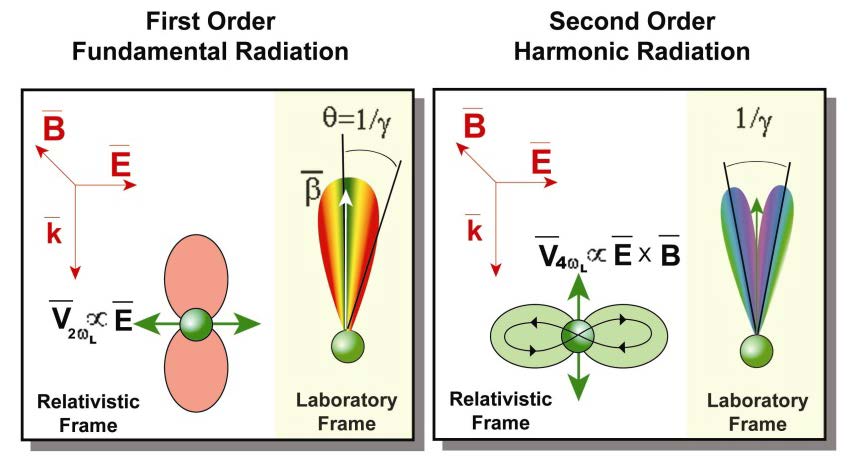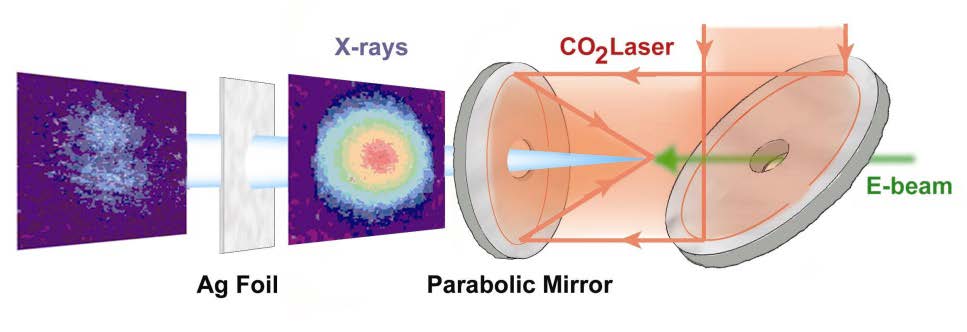- Home
- Capabilities
- Science Highlights
- Operations
- Publications
-
ES&H
- Experiment Start-up
- Laser Safety
Collider-Accelerator Dept.
- C-AD ES&H Resources
- Staff
- Users' Place
- Apply for Access
First Demonstration of 2nd Harmonic in Inverse Compton Scattering (ICS)
A new development in the Compton experiment, within the framework of the Japan-U.S. collaboration in High Energy Physics, was the first observation of the nonlinear component in relativistic X-ray Thomson scattering. The ATF Terawatt CO2 laser allowed generating relativistic oscillations of an electron in the laser field, wherein the electron’s transverse velocity is comparable to the speed of light, c. This condition is described by the laser’s strength parameter ???? = ????/?????? ˜ 1, where E is the laser’s electric field, e and m are, correspondingly, the electron charge and mass, and ? = 2pc/? is the laser’s frequency.
A relativistic electron oscillating within the laser’s electric field produces dipole radiation that, in the laboratory frame, is transformed into a single narrow lobe of X-rays (Figure 1 - left). The electron’s transverse movement, coupled to the laser’s magnetic field, causes the electron to oscillate along the initial direction of propagation with a radiated intensity pattern oriented perpendicular to this direction. The combined trajectory of electrons in the relativistic frame forms a figure-of-eight pattern. In the laboratory frame, this distribution appears tipped forward, developing two maxima with an angular separation, ?=1/? (see Figure 1 - right).

Figure 1. Understanding azimuthal patterns for the fundamental- and nonlinear- components in relativistic Thomson Scattering. B, E, and k are the magnetic, electric and propagation vectors.
To detect the nonlinear component in the experiment, the fundamental radiation was filtered out with a 10 µm silver foil. Figure 2 shows the Thomson X-ray pattern observed on a Kodak film with and without a filter. The 900 rotation of the laser’s polarization results in the corresponding rotation of a two-lobe X-ray pattern. To conclude, due to the favorable wavelength scaling of the a0 parameter, and the Thomson Xray intensity, a CO2 laser facilitated the first direct observation of a nonlinear component in relativistic Thomson X-ray scattering.

Figure 2. Observation of a nonlinear component in Thomson scattering (the left image).
Babzien, M., et al., Observation of the Second Harmonic in Thomson Scattering from Relativistic Electrons. Phys Rev Lett, 2006. 96(5): p. 054802.




